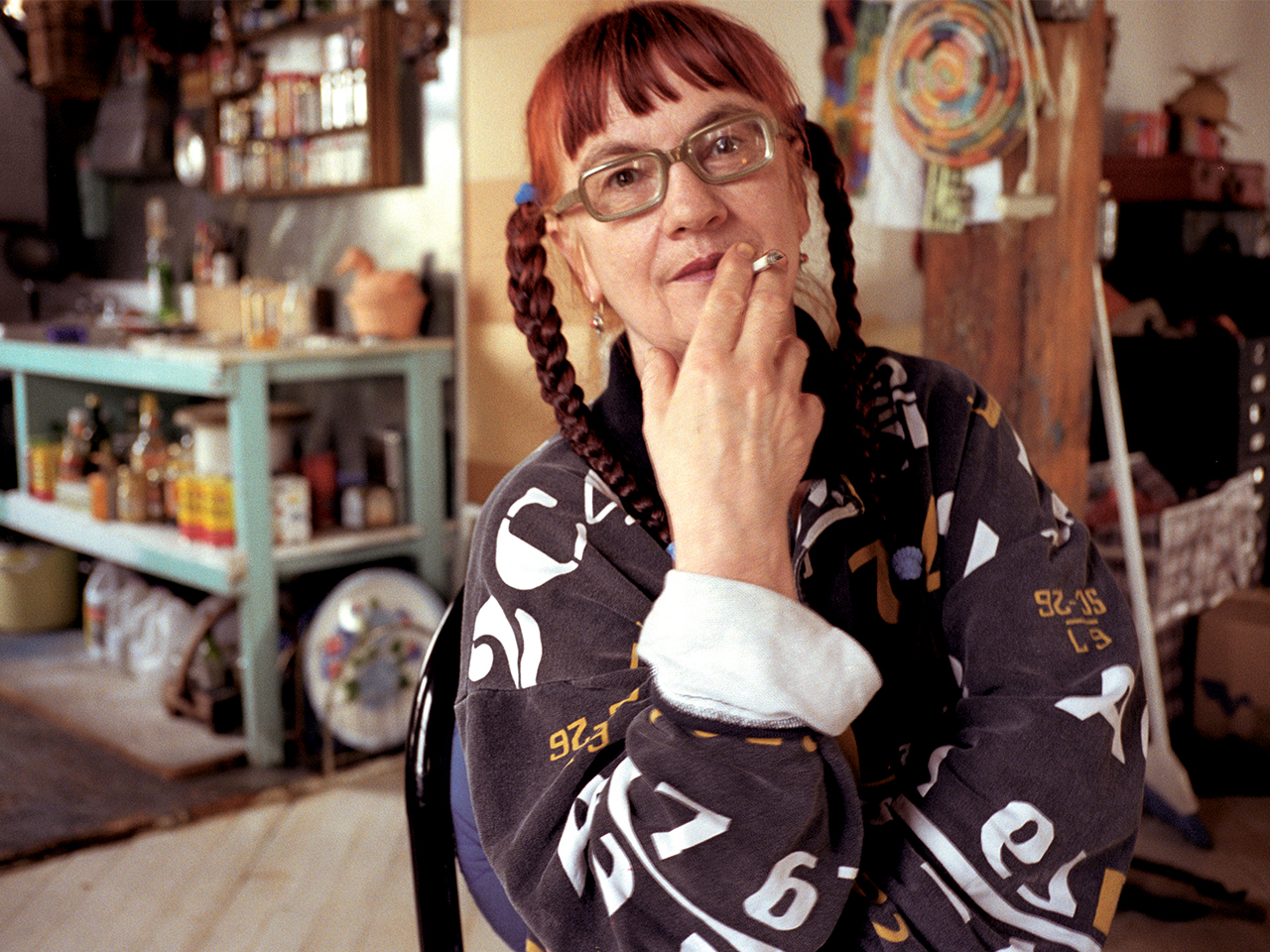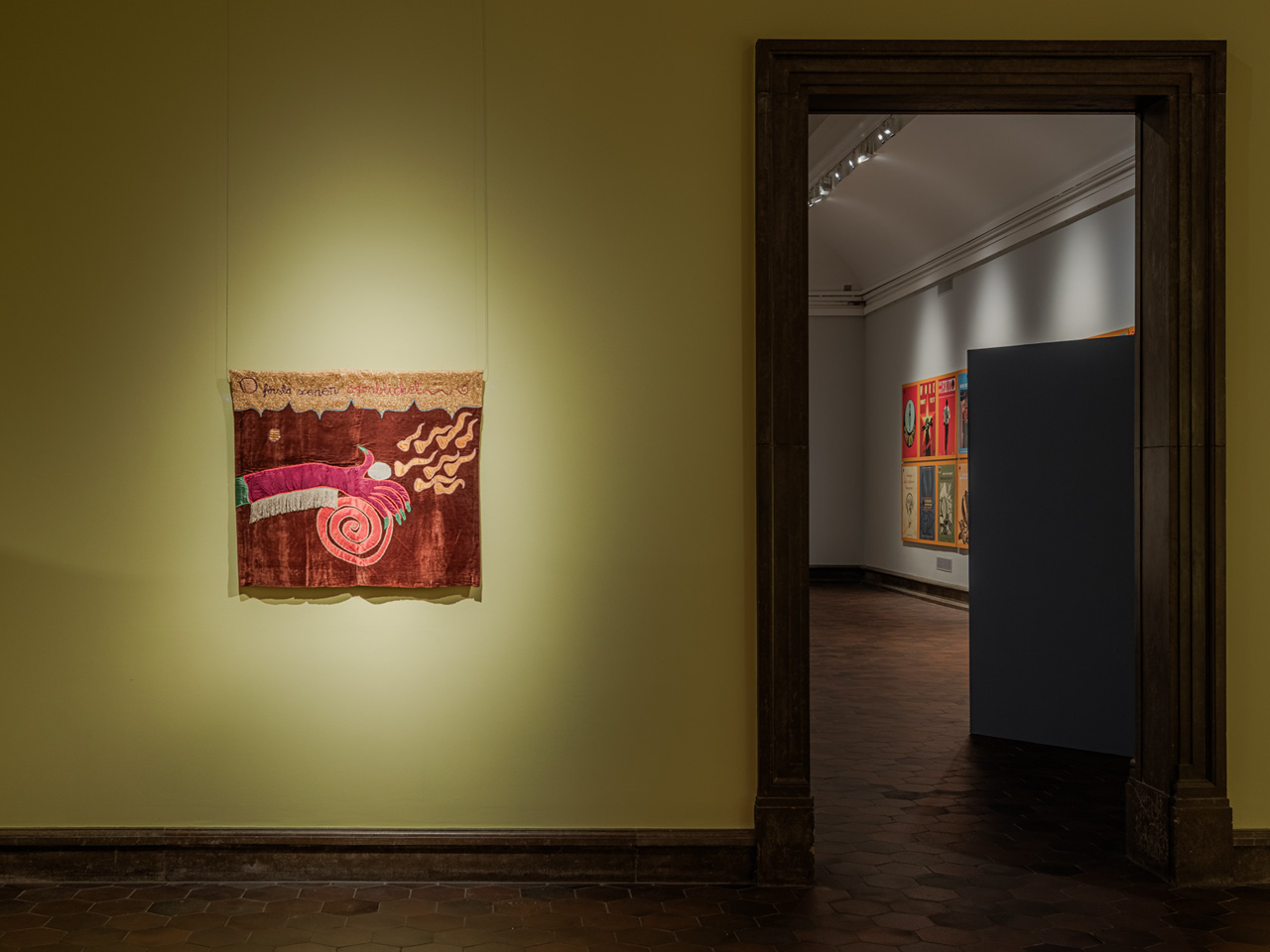Moki Cherry
Moki Cherry (1943–2009) was a Swedish artist and designer whose work spanned tapestry, painting, music, clothing, collage, sculpture, and ceramics. Born Monica Karlsson in northern Sweden, she moved to Stockholm in 1962 to study fashion but soon embraced a broader creative practice. Her work integrated painting, textiles, costume, and set design, often in collaboration with her partner, jazz musician Don Cherry (1936–1995).
Moki’s art combined functional materials and traditional crafts, exploring themes like ecology, spirituality, caregiving, and home life. She saw art as a way of living – “home as stage, stage as home” – and shared it through performances, workshops, and exhibitions. She and Don Cherry spent over 20 years living between Sweden and New York, raising a family and collaborating on projects like Organic Music. In 1970, they settled in a former schoolhouse in Skåne, which became a hub for their creative and family life. Moki exhibited for over four decades until her death in 2009.
Utan titel
1980
Appliqué on textile, 570 × 200 cm
On loan from Malmö Art Museum
Första scenen: Ögonblicket
1970
Appliqué on textile, 94 × 82 cm
On loan from Malmö Art Museum
Utan titel (stor takbaldakin, i tibetansk stil)
1977
Tapestry, 510 × 450 cm
On loan from the Estate of Moki Cherry
Courtesy of Malmö Art Museum and The Estate of Moki Cherry
Moki Cherry was a Swedish interdisciplinary artist whose textile practice was deeply intertwined with music, performance, and collective creativity. She saw art as a holistic experience; her philosophy, “home as stage, stage as home”, blurred the boundary between the domestic sphere and artistic expression.
The three textile works presented in the biennial offer a glimpse into Moki Cherry’s universe and wide-ranging interests – from her position as a feminist and the influence of Buddhism on her artistic practice, to the visual and narrative strategies of children’s literature and picture books, which were a major source of inspiration.
Originally trained in fashion, she expanded her practice into tapestry, costume design, and set creation, often collaborating with jazz musician Don Cherry. Together they developed Organic Music Theatre, a fusion of sound, visual art, and movement, where Moki Cherry’s vibrant textile pieces became immersive environments for performances. Her textiles appeared on album covers, stages, and in living rooms, transforming everyday environments into sites of artistic engagement.



